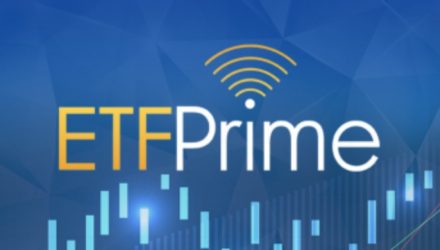On this episode of ETF Prime, VettaFi’s Todd Rosenbluth reviewed the top five ETFs by flows in the first half of 2023 with host Nate Geraci. Darren Schuringa of ASYMmetric ETFs talked about the firm’s Smart ETF suite, and Charly Travers of Motley Fool discussed portfolio management and their small-cap ETF.
Following the Flows in 2023 With the 5 Top ETFs
Bonds, Covered Calls, and Quality ETFs
5. The iShares Core U.S. Aggregate Bond ETF (AGG) experienced the fifth highest ETF fund flows year-to-date. The fund is up more than $8 billion YTD but remains closely tied with the Vanguard Total Bond Market ETF (BND), also at $8 billion net flows YTD. Fixed income funds like AGG and BND tend to be less volatile and provide “ballast” via the income generated. These two ETFs in particular are often part of a baseline, core allocation to bonds.
“We’ve seen fixed income ETFs lead the charge in 2023 asset gathering, both in the United States and globally,” Rosenbluth explained. “More advisors are getting comfortable using bond ETFs in their asset allocation strategy.”
4. It’s been a standout year for the JPMorgan Equity Premium Income ETF (JEPI) with over $9 billion in flows YTD. The fund currently offers a 30-day SEC yield of 8.5% and is actively managed with an eye toward volatility reduction. It’s a covered-call ETF that utilizes options and has brought in $24 billion in flows in the last two years.
“You’re getting high yield but through equities and with a lower cost structure,” said Rosenbluth.
3. The iShares MSCI USA Quality Factor ETF (QUAL) netted nearly $10 billion in flows YTD. Rosenbluth explained that half of the fund’s flows came in March when BlackRock shifted its model portfolios out of the iShares MSCI ESG Aware MSCI USA ETF (ESGU) and into QUAL. Since then, flows continue to consistently move into the fund.
“Given the uncertainty of earnings and the economy, many advisors are turning towards those higher-quality blue-chip companies,” Rosenbluth explained, including tilting towards quality. It’s a trend that funds like the newly-launched VictoryShares Free Cash Flow ETF (VFLO) capitalize on.
Treasuries and Equities ETFs
2. Within fixed income, the iShares 20+ Year Treasury Bond ETF (TLT) surprisingly came in second for YTD flows. With longer duration, Geraci hypothesized that high flows could be due to bets on a Fed pivot or as a hedge on recession risk. TLT has more than $11 billion in net flows YTD.
$3.5 billion of this year’s flows came in May during the debt ceiling crisis and hopes of a Fed rate hike pause, explained Rosenbluth. Increased flows to fixed income ETFs are likely also a product of the liquidity in the space and more institutional investors buying into bond ETFs.
“People turned towards TLT for the uncertainty that’s out there,” said Rosenbluth. “There’s still concerns about a recession and long-term Treasury bonds have been a good place to invest if there is a recession.”
1. The top ETF by flows in the first half of 2023 was the Vanguard S&P 500 ETF (VOO), up $14 billion YTD. Despite challenges for equities in much of the first half, the fund drew in $4.3 billion in June alone. In the last three years, the fund took in over $89 billion in net flows.
“It’s a good sign when investors are embracing ETFs,” Rosenbluth said. “There’s nothing wrong with owning the S&P 500 for three basis points.”
The two also discussed crypto developments and launches, and the recent strong performance by bitcoin and equity ETFs within the crypto ecosystem.
“Smart” Solutions for Equity Investing
Next on was Darren Schuringa, founder and CEO of ASYMmetric ETFs. Schuringa chatted the firm’s “Smart” ETF lineup and underlying technology used in the strategy. Schuringa’s experience includes co-founding the Exchange Traded Concepts as well as time in the hedge fund industry.
The ASYMmetric Smart S&P 500 ETF (ASPY) is index-based and powered by the same technology utilized in the “Smart” ETF lineup. It’s what Schuringa referred to as a “hedge fund seed” that’s been honed in the last decade.
“It was designed with one investment objective in mind and that was to provide protection against bear market losses,” Schuringa explained.
The technology analyzes two price signals, price momentum, and price volatility. Combining these two signals allows the strategy to identify current market risk and adjust portfolio risk accordingly. ASPY is designed to yield the same returns as the S&P 500 but with less risk. Historically, the maximum drawdown of the index ASPY tracks comes in at roughly 10% compared to the S&P 500’s maximum drawdown of 50%.
The firm also offers the ASYMmetric Smart Alpha S&P 500 ETF (ZSPY) and the ASYMmetric Smart Income ETF (MORE).
Don’t be Fooled Into Missing Out on These ETFs
Last on was Charly Travers, PM of funds like the Motley Fool 100 Index ETF (TMFC) at Motley Fool Asset Management. TMFC tracks on an index of the 100 largest companies listed in the Motley Fool’s active stock universe of recommendations.
“This is their analyst’s highest conviction ideas and then they are market cap weighted into an index which our ETF tracks,” Travers explained. Typically the index skews more towards consumers and technology, making it more growth-tilted.
The index rebalances quarterly and eliminates potential noise and volatility of personal bias as a passive strategy. The day-to-day of a passive PM still comes with a number of responsibilities. Travers explained the daily tracking of individual security deviations within the fund compared to the index. If needed, they can adjust accordingly to ensure better alignment with the index.
Motley Fool also offers the Motley Fool Next Index ETF (TMFX), a mid- and small-cap focused fund, and the Motley Fool Capital Efficiency 100 Index ETF (TMFE). Both are passive funds with TMFE offering exposure to “profitable growth” companies.
Listen to the entire episode of ETF Prime Featuring Todd Rosenbluth:
For more ETF Prime podcast episodes, visit our ETF Prime channel.

